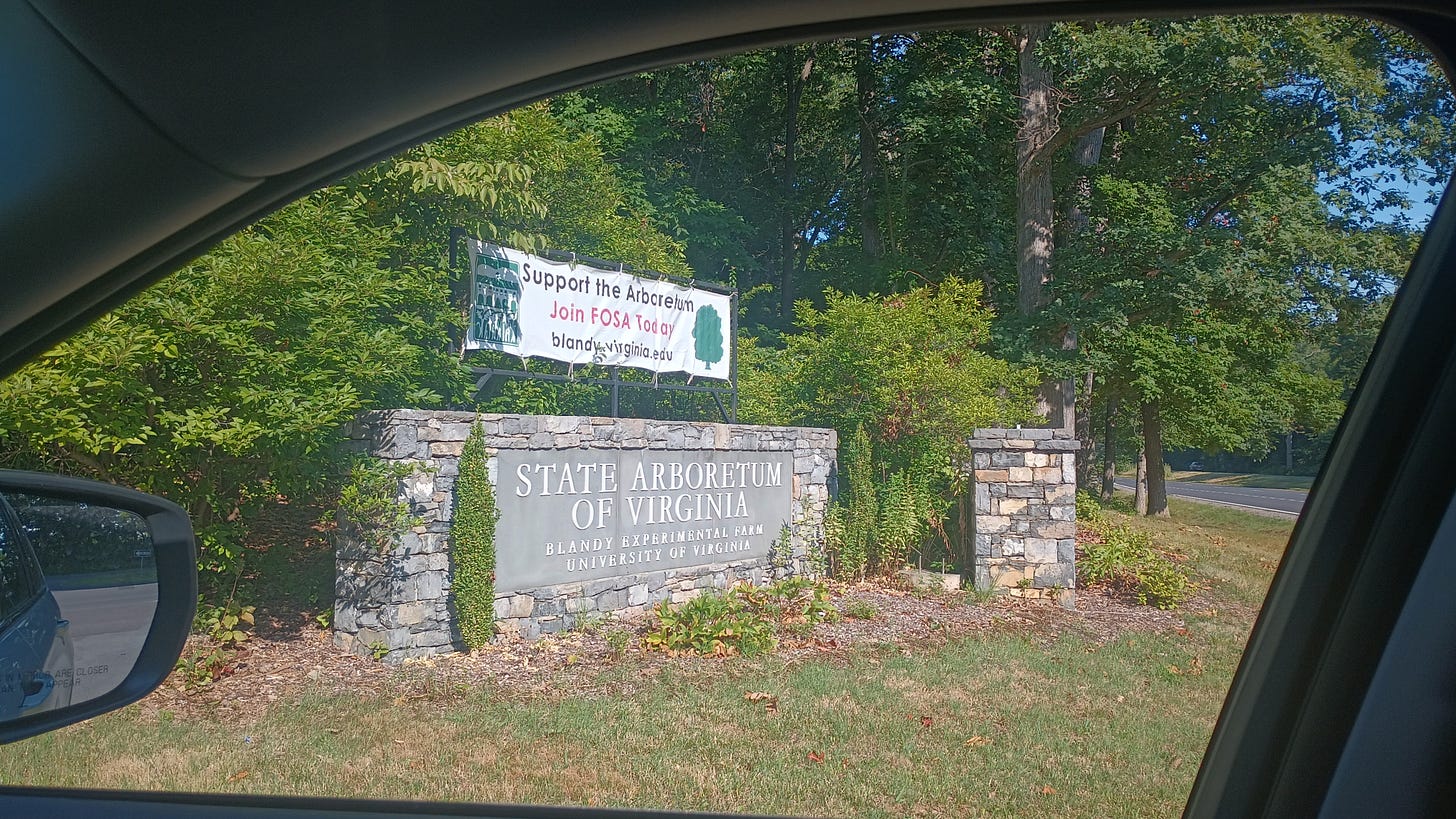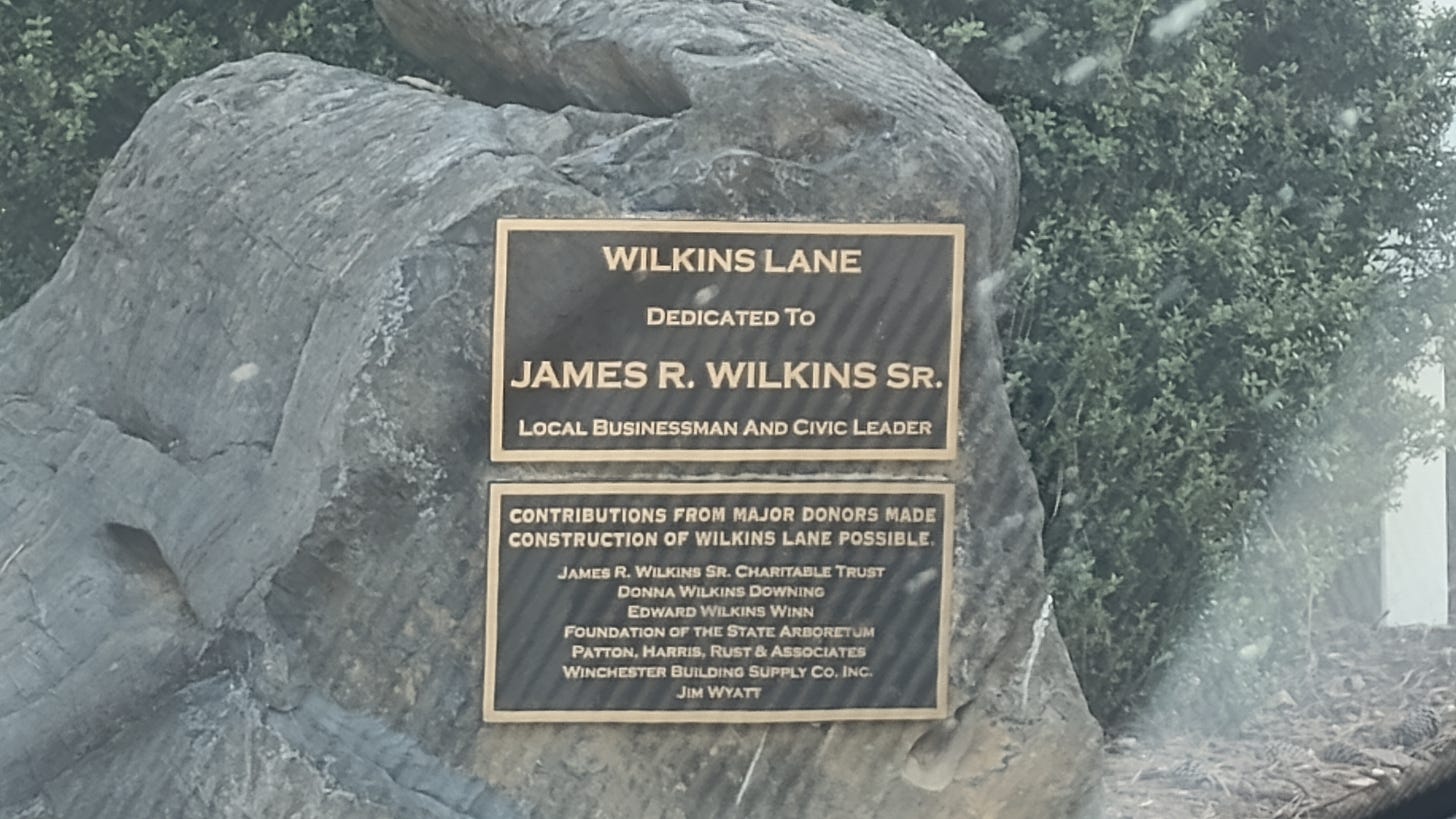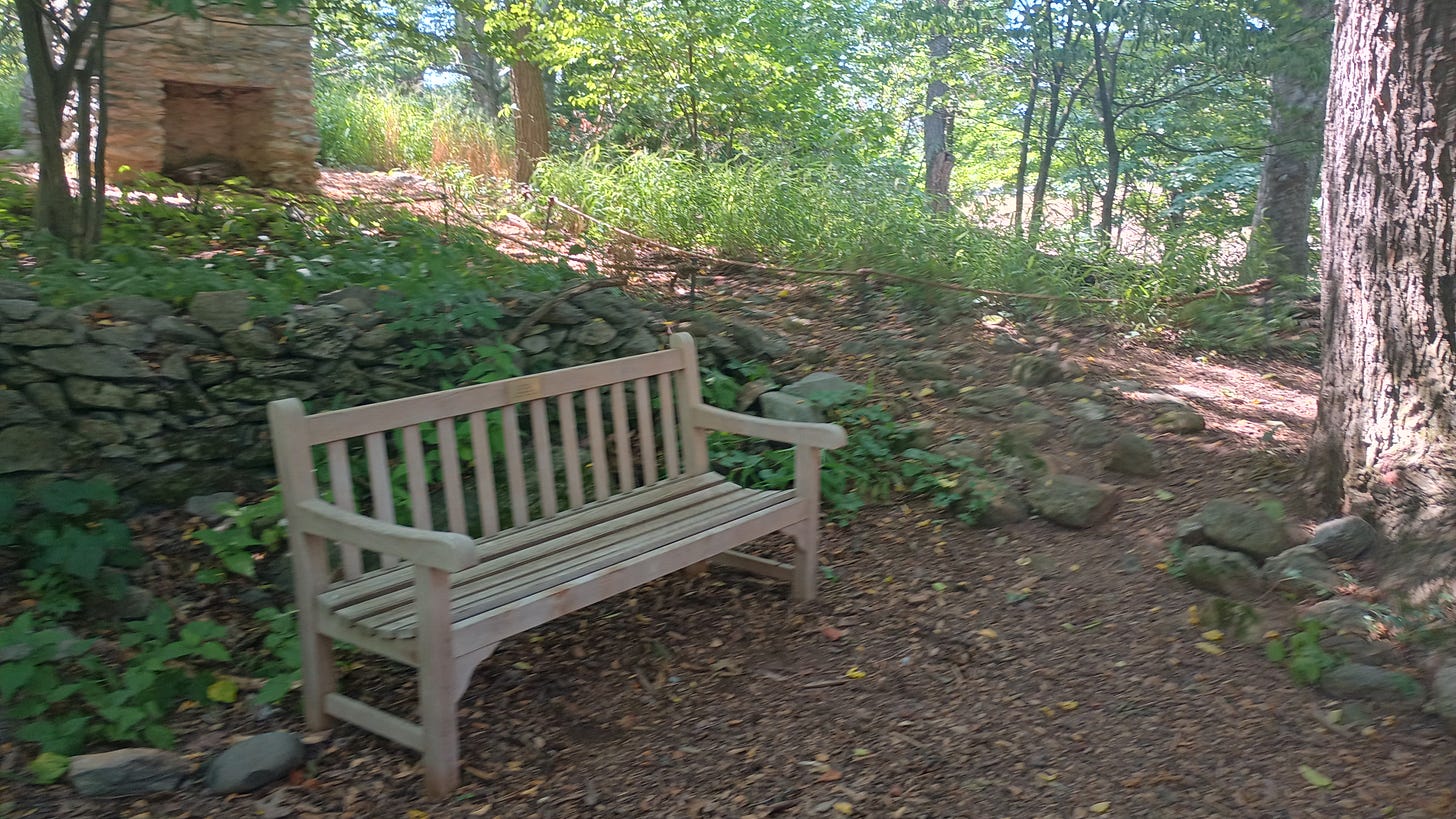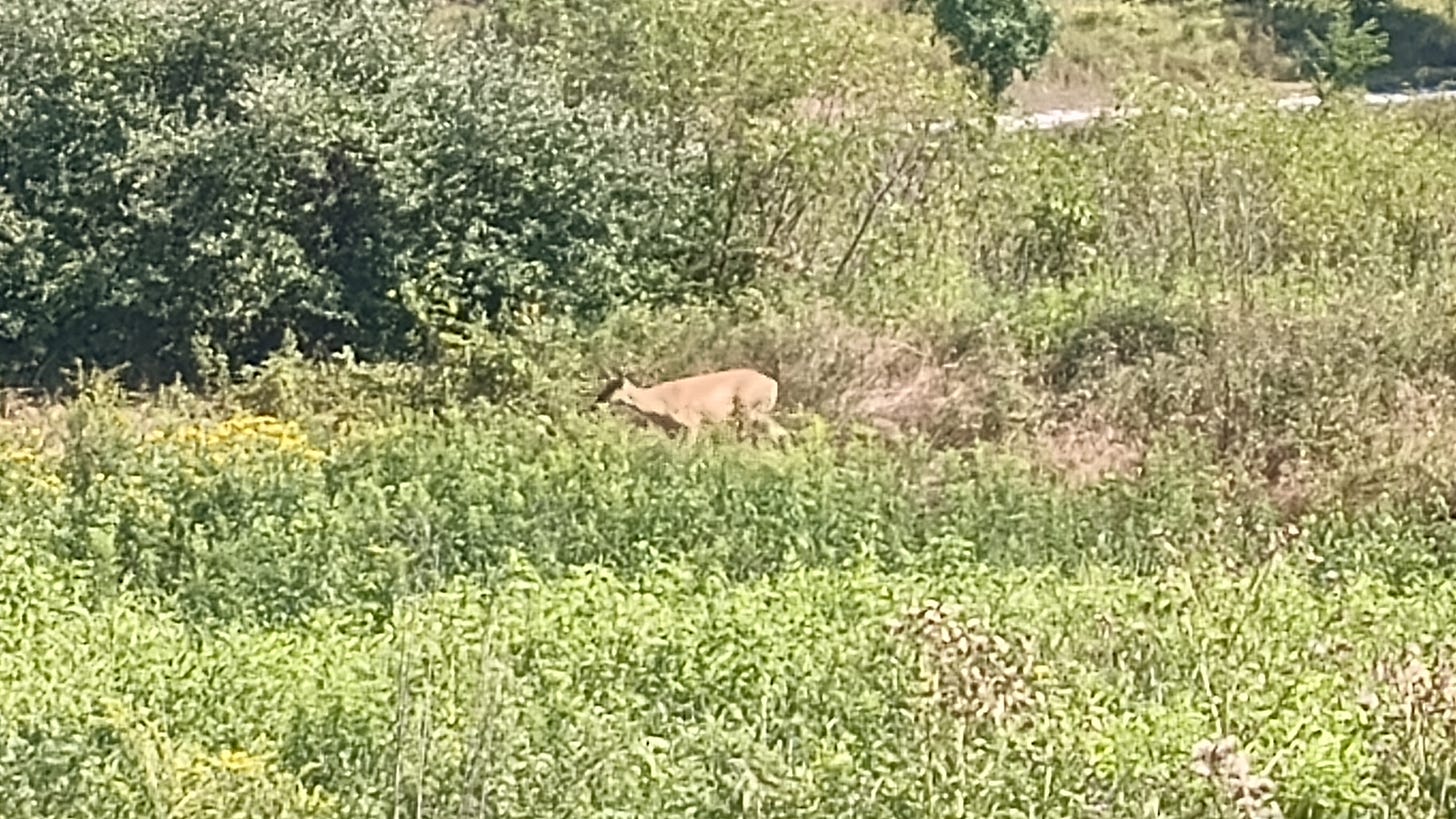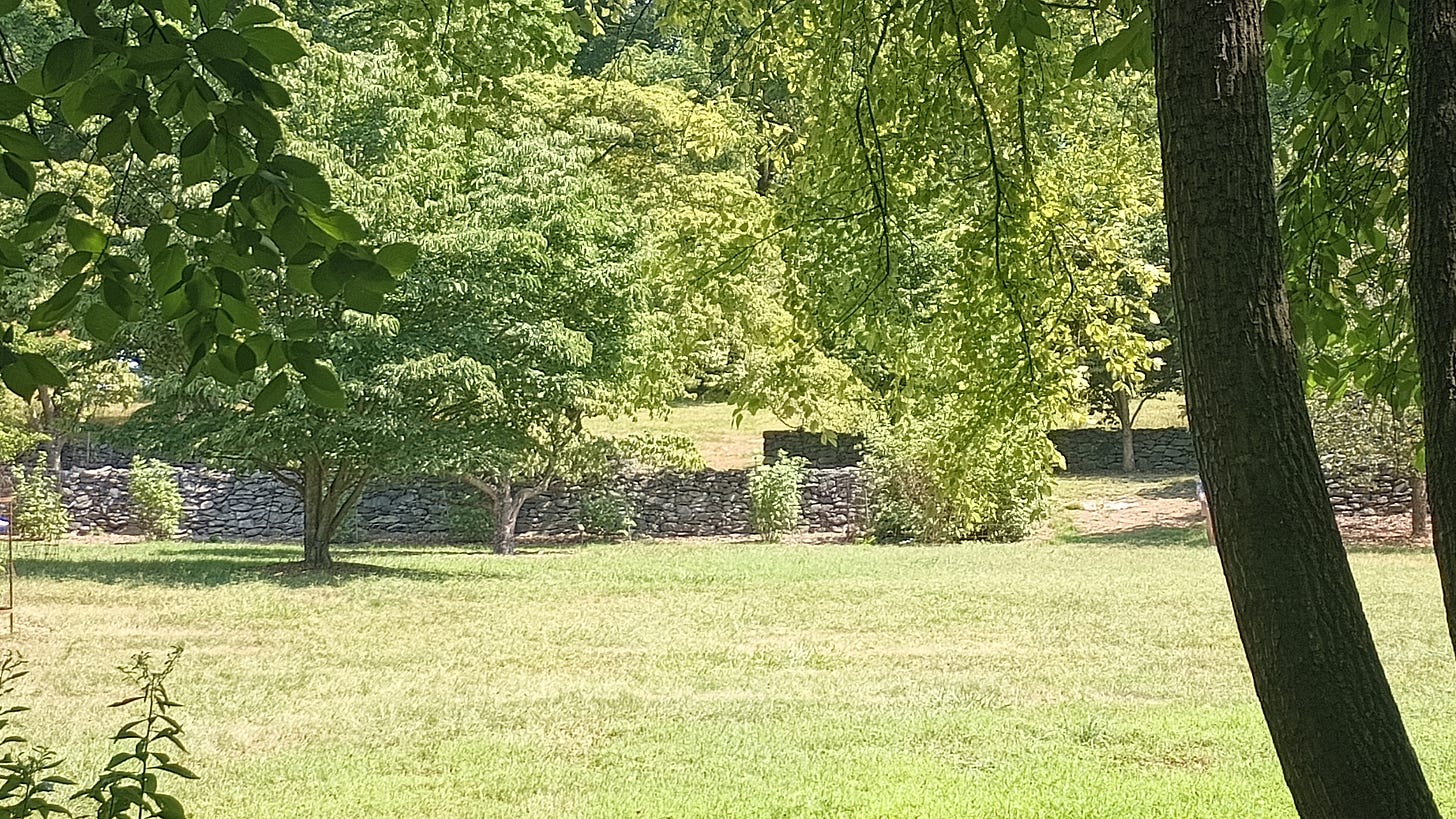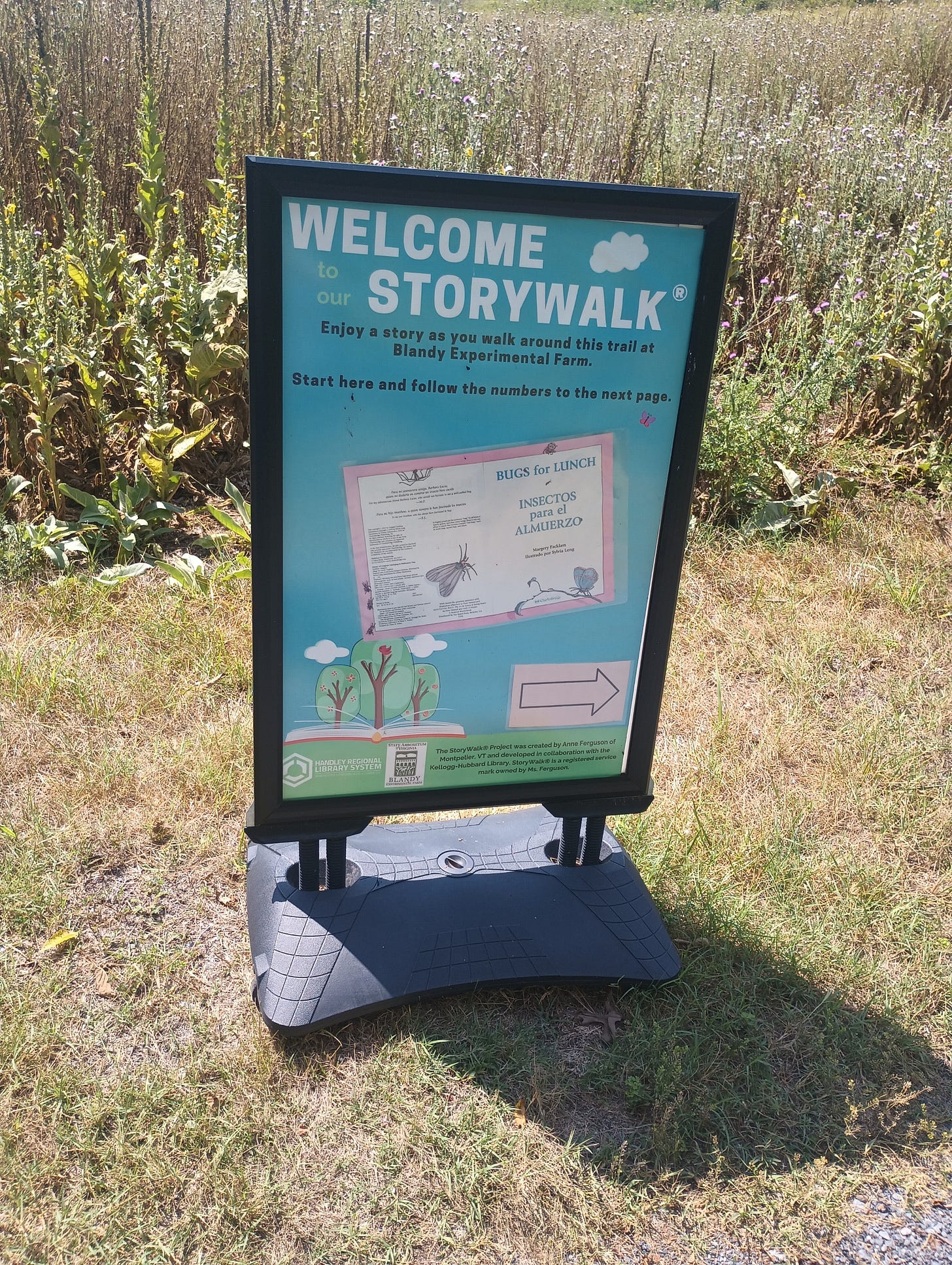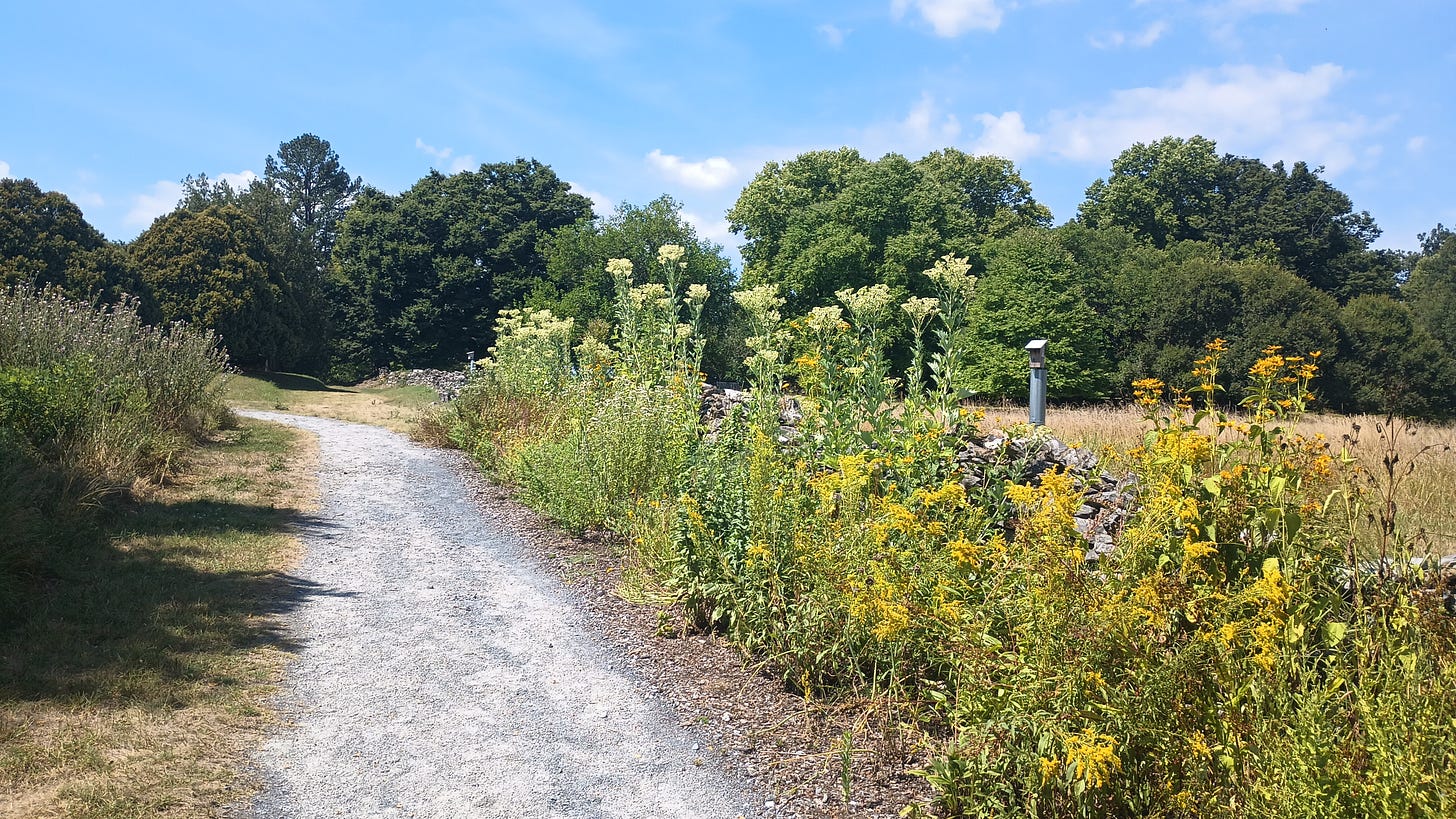I love arboretums! I like gardens and flowers and green things growing. I’m not amazing at knowing about the plants; I’m more the person who says “oooooh, pretty” and then goes to the next plant. My office is not very big, but has some good windows; and I’ve filled them with plants. Sometimes students ask what a specific plant is, and I shrug and say “a green one?”
But plants are good. And I’m always interested in stress-busting techniques, to keep brains chilled out and working as well as possible. Walking around outside in nature, in green spaces and blue spaces, 20 minutes a day is an excellent way to keep brains - and general health - moving along well.
I was actually heading somewhere else, looking for fun things to do, and drove by this sign. Immediate plan change!
And here we are! I felt very official heading into the State Arboretum. It was pretty early in the day, so I was not anticipating a crowd. And no, I was basically alone for most of the visit.
This is basically only of interest to me - but my birth name is Wilkins! And in the small amount of gemology I’ve seen, we have several James Wilkins people in the family history. So was this person related to me? I have no idea. But as I drove around Wilkins Lane, admiring the plants, I was excited to be on MY own lane!
For all the other people who prefer solitude in their nature explorations, here is my best pro tip. Just go a little further away. Go further from the entrance, from the main parking area, from the first trail, or from the easiest trail. Most people won’t bother; so you can have fun with your audiobooks (or whatever you enjoy), and explore some areas that other people aren’t going to see. And, it’s quiet!
I arrived pretty early in the morning, after dropping The Husband back on his Appalachian Trail - carefully in the same spot he left for the night, so he didn’t miss anything. And since I’ve been living out of the car for the last couple of months, I was fully stocked for any circumstance. I didn’t bother pulling out my comfy chair, but I did pull out my breakfast supplies, and enjoyed some al fresco dining standing alone in my parking area. It wasn’t hot yet, the scenery was beautiful, and I enjoyed snacking out of the bins of food I still had at the tail end of this trip.
(I always have spare food! In my office, in my backpack, on trips. I say it’s because I’m descended from generations of farmers, and we know winter is coming. And the Donner Party left from my hometown of Springfield, IL; and they could have used an extra snack. Now that I’ve driven over Donner Pass on this trip, it has a little more resonance.)
Sorry for the blur, but this was a lovely area! This was a little trail area, and oasis, off to itself. You could sit down in the shade - always nice, or enjoy this sort of walled area. I also walked up the little path up to that yellow thing in the background. That is a stove. Or, that may not be the right name - but it’s a place where (designated only!) people could build fires, cook, and have the smoke and heat go up that tall chimney. It was nice to see!
And I wasn’t alone out there! This deer did wander over pretty close to me, as I wandered around on my trail. (The deer do not need to stay on the trails, of course, as this is their home. So they can bushwhack through the tall grass as they wish.) She was not nervous about me at all, clearly used to seeing the occasional person trudging the area.
One thing I really like about the East Coast is all of their stones! I’m sure this was enormously frustrating to people as they set up homes and farms and other such uses of the land. But I love seeing stone houses, and these stone walls.
Thomas Jefferson is often erroneously credited with designing them in Virginia, but you can find them in all kinds of walls into antiquity. In the US they are called serpentine walls, but in the UK they are called crinkle crankle walls. They are sturdy, and require fewer stones or bricks to keep upright. And they just look good!
“The walls' unique shape makes them stand apart, both aesthetically and in practicality. The pattern of concave and convex waves, known as a sinusoidal pattern, serves a number of important purposes. During the Middle Ages, it was discovered that undulating walls helped fruit trees grow better in cooler climates. The curves created pockets that protected the trees from the wind while also trapping heat from the sun and radiating it back into the trees, essentially creating a longer growing season, Trimble says.” (see HowStuffWorks for the whole article)
Have I mentioned that I’m a librarian???? I feel like it’s come up here somewhere. And I loooove storywalks! If you haven’t seen these before, the idea is to walk and read books. It starts off with the title page, as you see here. Then you walk along a path, and every so often another page is shared on a similar sign until you get to the end of the book.
Obviously, this works best with short books with a few words - kid books. I love these, and I’m pretty sure I can figure out a way to make this idea useful for my college student patrons. (Working on it!)
This was the Overlook Pavilion - and it was lovely! By the time I got here, I was nearly done with my audiobook. (Captain Vorpatril's Alliance (Vorkosigan Saga #16) - I was working through the entire series on this trip! It’s fantastic!) So I walked up to the upper level, where they had some comfortable seating, and just put my feet up, sipped water, and enjoyed myself while I wrapped up the book.
I also saw a spotted lanternfly - boo! It just flew up and landed on the other end of the bench. I scanned it quickly, to be sure I was correctly identifying it; and then I tried to smash it, but missed. We don’t have them in Minnesota yet, but it’s an invasive pest.
From the Fish and Wildlife Service:
“Spotted lanternfly feed using piercing mouthparts to access sap beneath a tree’s bark. That alone can cause harm a tree, but it gets worse. After feeding, spotted lanternfly excrete a substance called honeydew: partially digested sap that attracts other nuisance insects to the host tree and causes the growth of a fungus called sooty mold.
The fungus stresses the tree, leaving it vulnerable to other diseases and pests, and disrupts photosynthesis, stunting the growth and overall health of the tree. In cases where the host plant provides an economically important commodity, like apple trees or grape vines, the mold also affects the look, taste, and smell of the fruit.
Beyond the potential destruction that these pests could bring to the region’s apple and wine industries, spotted lanternfly poses an ecological threat too.
The insect causes harm to native trees and forests, potentially destroying habitat for countless species. Bats that roost in trees for part of the year may find less available habitat. The same goes for birds, mammals, and reptiles that rely on woody vegetation for habitat and food.”
And finally, I was happily trudging along a variety of paths that all kind of looked like this. What are these plants? I have no idea. But in that moment - I did! I have the app called Seek, from iNaturalist on my phone, and I’m constantly scanning plants and other living things to find their names and some information about them. For those of us who are into gamification, they offer a variety of challenges you can pursue if you want to get out there and find more information about the plants and wildlife in your area!
Have you been outside yet today? It would be a good time to go outside, and walk around for 20 minutes or so while you enjoy some nature! It’s fun, and it’s good for you - a good combination. Happy walking! (Take a plant identification app with you, if you want to have that added level of fun!)




